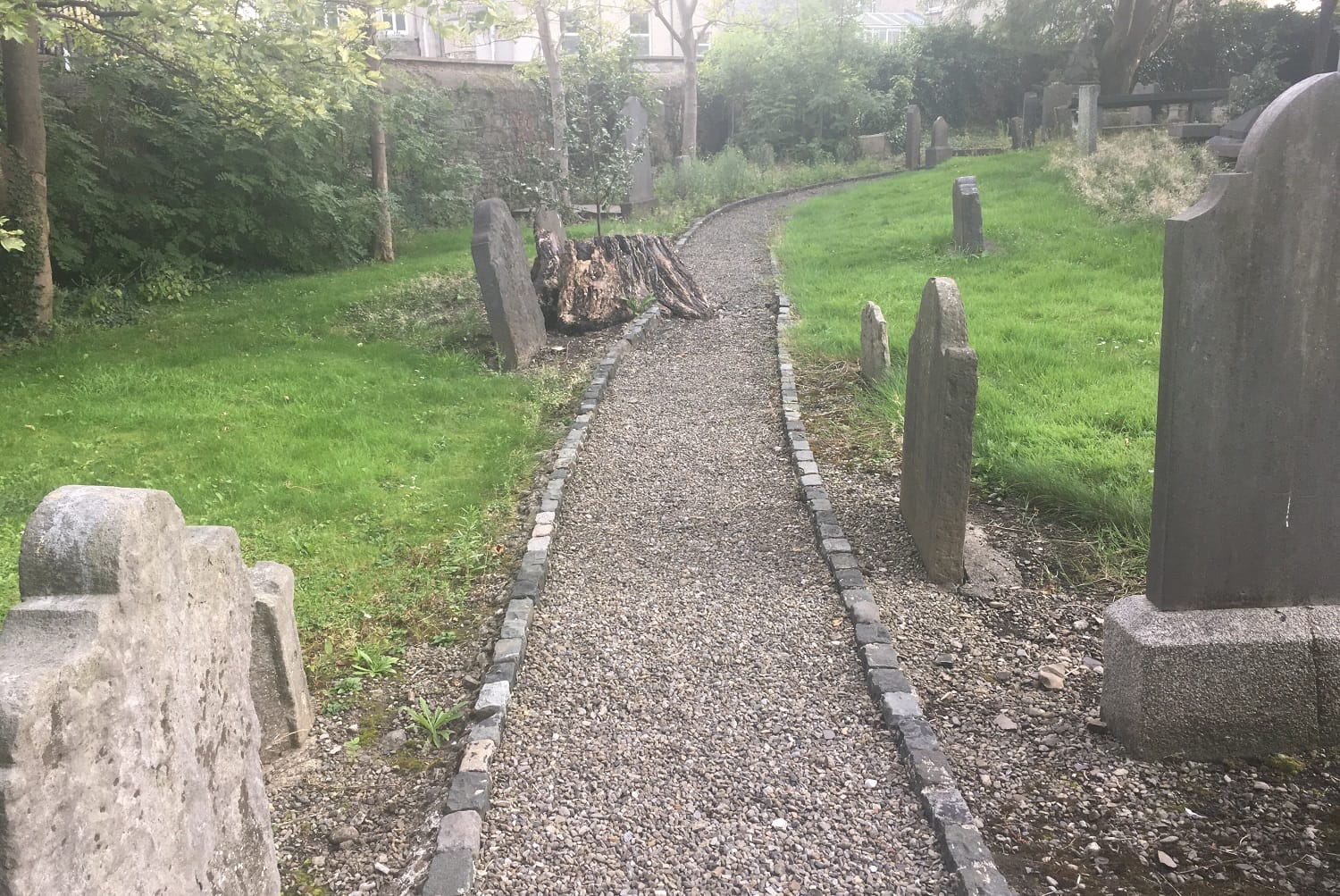What’s the best way to tell area residents about plans for a new asylum shelter nearby?
The government should tell communities directly about plans for new asylum shelters, some activists and politicians say.
The Beaver Row Heritage Players’ most recent project is a documentary on the history of the Donnybrook Cemetery and the people who have tended to it over the years.

Glenda Cimino opens the door to her 19th-century cottage on Beaver Row, which faces the River Dodder. A border collie and two spaniels bark behind her legs.
There’s a big, two-story chapel just visible behind her home. She uses it sometimes as a rehearsal space for her theatre group, the Beaver Row Heritage Players, she says.
She leads the way inside, and puts on the kettle, before she sits down at her kitchen table and flips open her laptop. She’s just polishing up the Players’ latest project, Donnybrook’s Hidden Treasures.
The 35-minute documentary explores the history of the Donnybrook Cemetery and the people who have tended to it over the years.
“I’ve been living here since 1974 and doing research on the area,” Cimino says. “I just felt it was something that needed to be done.”
Membership of the Beaver Row Heritage Players is “loose”, says Cimino, a filmmaker and actor, who started the group in 2014.
“It’s a handful of people interested in theatre and film and site-specific work and history,” she says.
Neighbour James Martinez co-founded the group. He’s edited some of her films.
“I was excited. I was doing some acting at the time and I live around the corner,”** **he says later on the phone.
They produced their first play in 2015. Called Wesleyans and Hatters of Beaver Row, it was based on the history of the 19th-century Beaver Hat Factory, and the factory workers’ homes on the opposite side of the Dodder River.
The short play – it lasted 15 minutes – was performed in Cimino’s kitchen and sitting room which was decorated like “1830”, Cimino says.
“[T]here was a Mad Hatter’s tea party going on in that room,” Cimino says, pointing to the closed door of the sitting room, across the hallway.
But “our Mad Hatter had to go to the hospital the day before the show so I had to learn his part and do the Mad Hatter”, she says, with a laugh.
In 2016, the group did the Donnybrook Patriot Trail Walk, collaborating with Toírdhealach Ó Braoín and Sean Brennan of the Friends of Donnybrook Facebook group.
“We went from house to house where people lived,” Cimino says. “Outside the house, there would be an actor dressed in 1916 clothes playing the ghost of people that lived in that house.”
The players dressed up as Joseph Plunkett, Eamon de Valera and Irish Volunteers founding member Michael O’Rahilly.
Their 2017 project was Celebration of the River Dodder, which included a guided walk with stories, poems, songs and even a blessing by Choctaw artist Waylon Gary White Deer.
In 2018, they had a presentation on the history of Donnybrook with some of the actors in character, at the Hive community building in Herbert Park.
“Last year and this year, we’ve gone under the auspices of the Donnybrook Tidy Towns,” Cimino says, because Tidy Towns sponsors their use of the Hive.
For their 2019 project, the members of the Beaver Row Heritage Players and Caroline Brennan filmed Donnybrook’s Hidden Treasures, their documentary about the 1,000-year-old cemetery on Donnybrook Road.
In use until the late 1800s, the cemetery was originally the site of an old Celtic church, according to historian Beatrice Doran, whose book Donnybrook – A History is quoted on a notice board in the cemetery.
In the documentary, Cimino talks to Miceál Mac Gíobúin, who caretakes the cemetery in his spare time. She also talks to David Neary.
Neary, who used to work for Dublin City Council, doesn’t live in Donnybrook but has given tours there for 13 years. In the film, he lists its famous inhabitants.

There’s William Ashford (1748–1824), the president of the Royal Hibernian Society, and Richard Robert Madden (1798–1886), a doctor and abolitionist.
The cemetery hosts the remains of people killed by the Danish Vikings in the 9th or 10th century in Danesfield, Donnybrook. These were uncovered during an excavation in 1879.
There’s also Leonard McNally (1752–1820), who was a founding member of the United Irishmen, but also informed on the organisation to the British government.
In the film, Neary says he feels uneasy about speaking ill of McNally, because he isn’t there to defend himself.
“You can see he’s sensitive,” Cimino says. “David’s knowledge is so tremendous.”
The film had its premiere in the Hive on 24 and 25 August. Cimino says she hopes to give it a wider release by October, after final edits.
Next might be another play, says Cimino.
She’s thinking of one about Gideon Ouseley, a Methodist preacher, revered by Oscar Wilde, with a hyper-local connection.
He delivered sermons in the chapel behind Cimino’s home, she says. “He was a fascinating person.”
Martinez says they’ve also discussed a play on Molly Woods, who lived on Morehampton Road.
She was a confidant of Michael Collins, and her home was frequently raided, according to her memoirs.
“She looked after people in the 1916 Rising in Donnybrook,” Martinez says. “She took care of them and brought them into her house. It was like a half-way house.”
“Hopefully we have the Hive next year. If not, in the chapel behind Glenda’s,” he says.
Get our latest headlines in one of them, and recommendations for things to do in Dublin in the other.